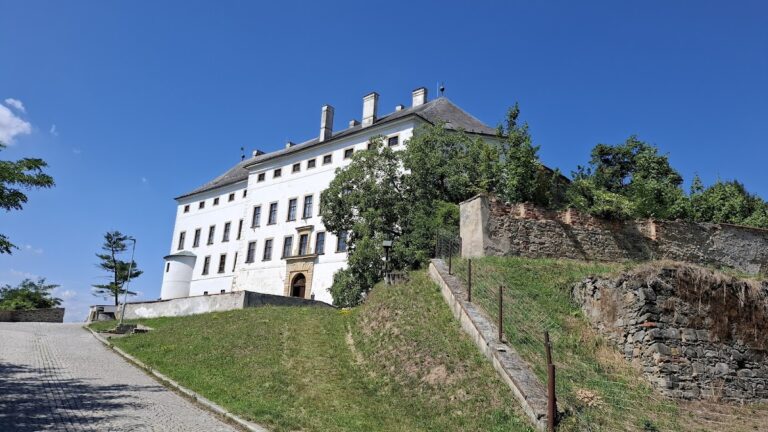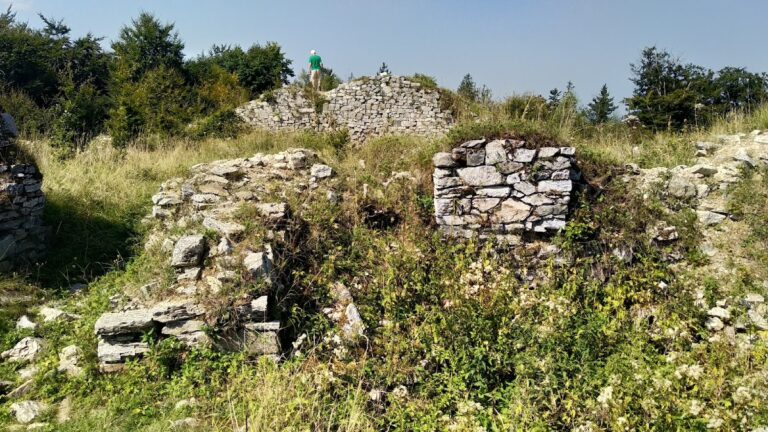Nový hrad: A Medieval Castle Ruin Near Lužná, Czech Republic
Visitor Information
Google Rating: 4.7
Popularity: Low
Google Maps: View on Google Maps
Country: Czechia
Civilization: Medieval European
Remains: Military
History
Nový hrad is a castle ruin situated near the village of Lužná in the Czech Republic. It was constructed by medieval inhabitants of the region, likely under the direction of Moravian margraves or the bishopric of Olomouc, serving initially as a fortress to protect the nearby town of Šumperk.
The first known written mention of Nový hrad dates back to 1374, referencing Jan Václav of Mladějov as the castellan and listing the Lords of Lipá as owners. During this early period, the castle held control over nearby villages including Kopřivná, Lužná, and Osikov, indicating its role in local administration and defense.
From 1420 to 1437, Nový hrad belonged to King Sigismund, who used the stronghold as a military base for his forces during the Hussite Wars, a series of conflicts rooted in religious and political upheaval in Bohemia. Following this period, the castle changed hands several times. Notable owners included Beneš of Waldstein and Bernard of Cimburk, with the latter undertaking significant expansions to strengthen the fortress.
In 1455, ownership passed to Jan Tunkl of Brníčko and his descendants. However, around 1470, during the Bohemian-Hungarian wars, forces led by Matthias Corvinus captured and destroyed Nový hrad. The damage was so extensive that the castle was never rebuilt and is recorded as deserted as early as 1504.
Declared a cultural monument of the Czech Republic in 1964, the site remains privately owned today. Due to concerns about safety, it is currently not accessible to the public.
Remains
Nový hrad was one of the largest medieval castle complexes in northern Moravia, featuring a distinctive triangular layout spreading across roughly 1.5 hectares. Its original construction included a monumental tower standing about 40 meters tall, with extraordinarily thick walls measuring five meters and a diameter of 12 meters. Adjacent to this tower was a two-story palace with a gallery, separated by a small courtyard, indicating an arrangement designed for both defense and residential functions.
Over the centuries, the castle underwent several additions to its fortifications. In the late 14th century, builders added a second defensive wall equipped with towers and bastions on the north, west, and east faces to bolster protection. After 1420, a third ring of stone walls replaced earlier wooden palisades, enhancing the complex’s resilience against attack.
Under the direction of Bernard of Cimburk, a fourth defensive corridor was constructed extending westward. This outer wall was less solid than the inner rings but included bastions and stretched about 250 meters in length with varying widths between 10 and 50 meters. Within this area stood operational buildings and stables near what is referred to as the third gate. A moat separated this outer zone from the castle’s neck, further impeding potential assault.
Today, the ruins of Nový hrad reveal parts of four gates and four bastions belonging to both the upper and lower sections of the castle. The great tower, or bergfried—a term for a tall defensive tower typical of German castles—has collapsed, yet large sections of its masonry remain scattered on site. The defensive walls survive in fragments, with lengths ranging from 100 to 300 meters visible around the main castle area and the outer bailey. These remnants offer a tangible glimpse into the castle’s former scale and defensive complexity.







